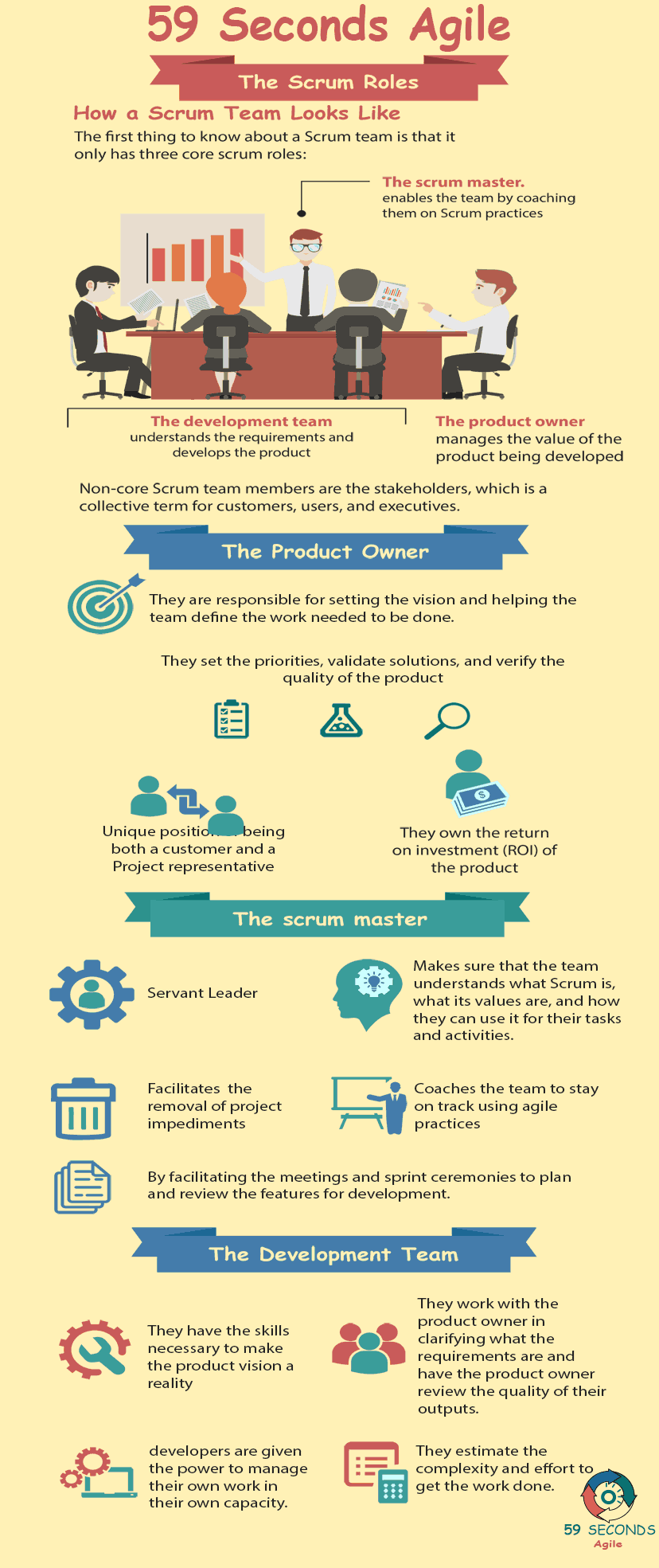
The Scrum Roles For Product Owners
Behind every great product made is a great team who toiled hours of craftsmanship together. For software development, the secret sauce to making Agile work is to build a team that upholds the Agile manifesto and principles. Scrum, a popular Agile framework, is built on the three pillars of empiricism: transparency, inspection, and adaptation. Its fact-based, experience-based, and evidence-based approaches to software development helps teams address complex problems together and deliver a product with the highest possible value.
How a Scrum Team Looks Like
The first thing to know about a Scrum team is that it only has three core scrum roles:
● The Product Owner – manages the value of the product being developed
● The Scrum Master – enables the team by coaching them on Scrum practices
● The Development Team – understands the requirements and develops the product
Scrum does not require a project manager, a task manager, or a team leader. It also does not put distinction in the traditional software engineering roles, such as programmer, designer, or analyst. Everyone has collective ownership over what they committed together to finish within a sprint and a release. Being a typically small team of five to nine people makes collaboration more manageable. If a project will require more people, they will be divided into several Scrum teams and will hold Scrum of Scrum meetings for coordination.

Non-core Scrum team members are the stakeholders, which is a collective term for customers, users, and executives. They are important in a Scrum project as their feedback is taken into account in shaping the product.
As a Product Owner, understanding the different scrum roles and how they interact with you will help in collaborating better in building a great product together.
The Product Owner
Being the product owner is not an easy feat. As the foundation of project success, they are responsible for setting the vision and helping the team define the work needed to be done. They set the priorities, validate solutions, and verify the quality of the product. They also hold a unique position of being both a customer and a project representative, making it necessary to “fight” on both sides at times. They own the return on investment (ROI) of the product and coordinate the finances needed for product development. The product owner should be able to communicate clearly and be knowledgeable of where the project is in order to steer the team to where they should be.
Our Favourite Agile Books
We found these books great for finding out more information on Agile Scrum:
Interacting with the Scrum Master
The best way to describe what the Scrum Master would be to call them a servant leader. The Scrum Master makes sure that the team understands what Scrum is, what its values are, and how they can use it for their tasks and activities. The Scrum Master also facilitates the removal of project impediments, either by being the catalyst for change or by empowering the team on how to deal with the problems.
The Scrum Master is the process owner who coaches the team to stay on track using agile practices. As more work comes in, the more time-consuming it is to organize user stories and defects. The Scrum Master helps the product owner by facilitating the meetings and Sprint ceremonies to plan and review the features for development. The Scrum Master also coaches the team to collaborate with the product owner for ideating, discussing, and clarifying product direction. The Scrum Master and the product owner are a tag team, and they use each other’s strengths in leading the team towards their goals.

